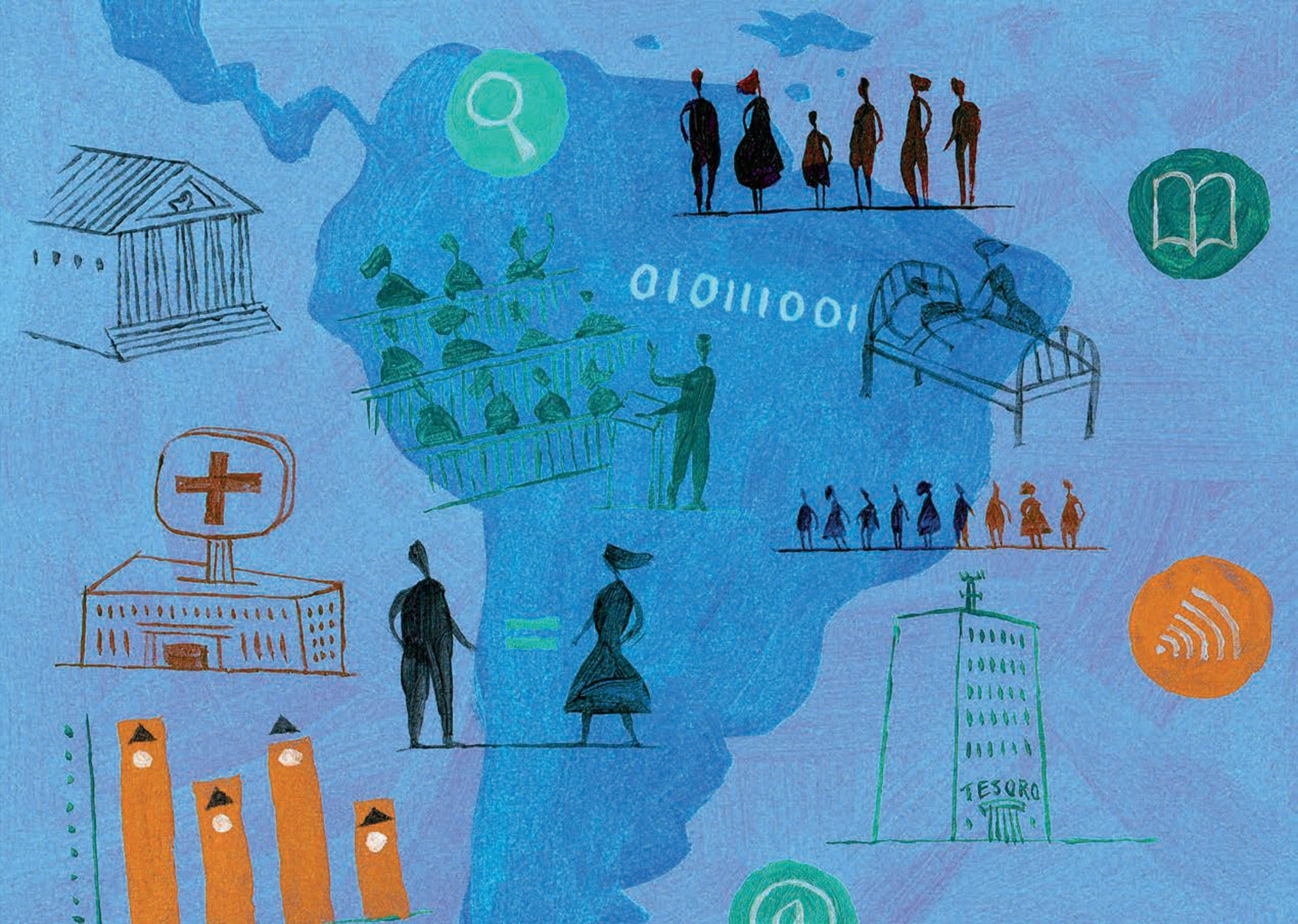Governments raise revenues (through taxes, royalties, custom duties, etc.) to finance the provision of goods and services and to redistribute income (e.g. social benefits and subsidies). The amount of revenues collected depends on multiple factors such as government fiscal policies and type of development model, the endowment of natural resources, political institutions, the stage of economic and social development, and internal and external macroeconomic conditions.
In LAC countries, general government revenues on average accounted for 26.9% of GDP in 2018 below by 1.3 p.p. the 2007 value. The GDP has increased at a faster pace than government revenues (which have increased in absolute and per-capita terms) explaining why the overall revenue to GDP ratio decreased for the period under study. This trend is in stark contrast to the OECD where general government revenues reached 37.5% of GDP in 2018 and increased by 0.2 p.p. since 2007. LAC countries with the highest percent of revenues per GDP are Ecuador (35.8%), Argentina (33.6%) and Brazil (31.2%). In the other end of the spectrum, the Dominican Republic (14.1%), Costa Rica (13.6%) and Guatemala (10.6 %) collect the least revenues.
Between 2007 and 2018 the largest increase, in general government revenues as a percentage of GDP occurred in Ecuador (9.13 p.p.). The explanation for this increase is manifold, including the effect of a recent rebound in the price of hydrocarbons but also structural factors such as reforms to the tax system, which included higher rates on income and inheritances in 2008 and the introduction of some new taxes (e.g. the exit currency tax). Efforts to modernise the tax administration and reduce evasion have also led to significant increase in the number of taxpayers in Ecuador. General government revenues decreased the most in Panama (6.1 p.p.) which may be explained by the existence of numerous tax exemptions and incentives, and underperformance in tax collection, which could reflect structural weaknesses in customs and the tax administration (IMF, 2019).
An alternative way of looking at the importance of the government in the economy in terms of financial resources is to measure government revenues per capita. On average revenue per capita in LAC countries reached USD 4 437 PPP in 2018 significantly below the OECD average of USD 17 865 PPP. Among the countries with the highest revenue per capita are English speaking Caribbean islands (Barbados and Trinidad and Tobago) alongside countries in the southern cone (Argentina, Chile and Uruguay). On average, revenues per capita increased at an annual rate of 0.6% in the LAC region compared to 0.8% in the OECD. Still, the GDP has increased at a faster pace than government revenues explaining why the overall revenue to GDP ratio decreased for the period under study. The highest negative annual average growth rate in government revenues (-1.9%) occurred in Trinidad and Tobago explained by several years of weak or negative growth and strong dependency on hydrocarbons and the consequent recent negative fluctuations in prices and production (OECD 2019).



